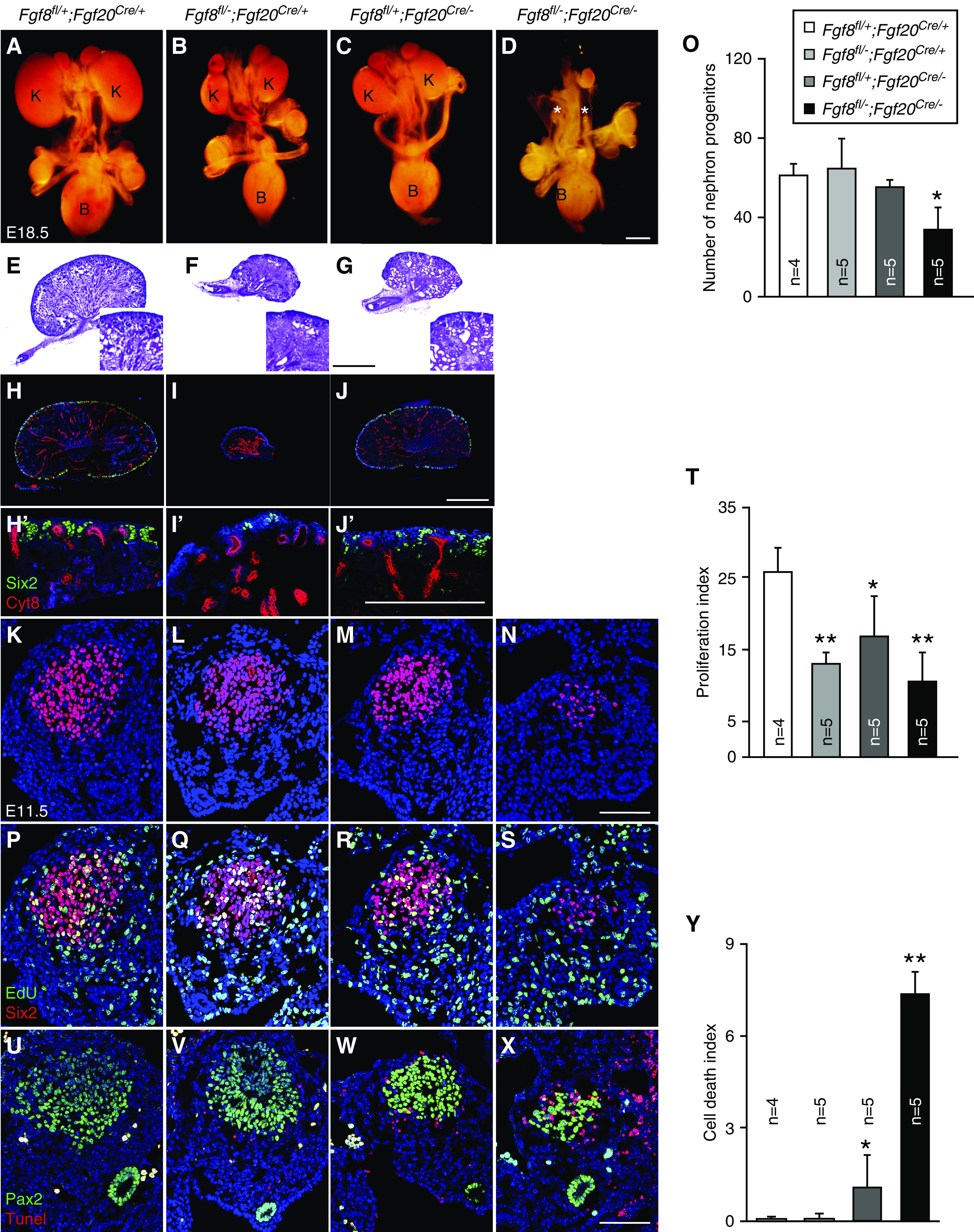Figure 5.

Fgf8 functions redundantly with Fgf20 to maintain nephrogenesis and nephron progenitors. (A–D) Morphology of urogenital system in E18.5 Fgf8 and Fgf20 compound mutants showing bilateral renal agenesis in Fgf8 and Fgf20 double mutant. * in (D) indicates loss of kidneys. (E–G) Hematoxylin and eosin staining of E18.5 Fgf8 and Fgf20 compound mutants, (F) showing loss of nephrons in Fgf8fl/−;Fgf20Cre/+ kidneys. Higher magnification shown in insets. (H–J) Sections of E18.5 kidneys stained with cytokeratin-8 (Cyt8) and Six2 in E18.5 Fgf8 and Fgf20 compound mutants. (H′–J′) High power image of nephrogenic zone from E18.5 Fgf8 and Fgf20 compound mutant kidneys. (K–N) Six2 staining of E11.5 Fgf8 and Fgf20 compound mutant kidneys. (O) Quantifying the number of nephron progenitors of Fgf8 and Fgf20 compound mutants, showing decreased nephron progenitors in Fgf8fl/−;Fgf20Cre/−. (P–S) Six2 and EdU staining of E11.5 Fgf8 and Fgf20 compound mutant kidney slides. (T) Proliferation index of Fgf8 and Fgf20 compound mutants, showing decreased nephron progenitor proliferation in all Fgf8 and Fgf20 compound mutants. (U–X) Pax2 and terminal deoxynucleotidyl transferase–mediated digoxigenin-deoxyuridine nick-end labeling (Tunel) staining of E11.5 Fgf8 and Fgf20 compound mutant kidneys. (U) Cell death index of Fgf8 and Fgf20 compound mutants, showing increased nephron progenitor cell death in Fgf8fl/+;Fgf20Cre/− and Fgf8fl/−;Fgf20Cre/−. Data are shown with mean±SD. *P<0.05, **P<0.01. Scale bar, 500 µm in (D), (G), (J), and (J′), 100 µm in (N) and (X). K, kidney; B, bladder.
